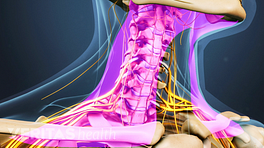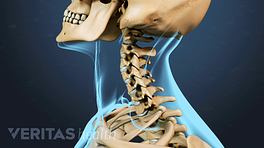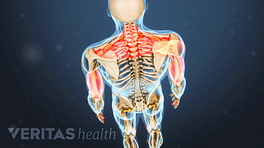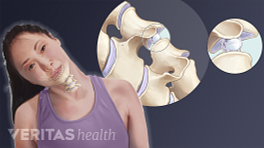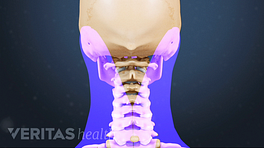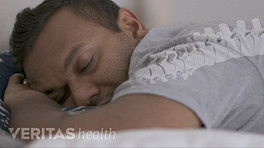Here are 10 quick tips to prevent or reduce neck pain:
Try a new pillow
Keep the spine in its natural alignment while sleeping. Some might prefer smaller or flat pillows while sleeping on the back, or a larger pillow when sleeping on the side to keep the head between the shoulders.
Sleep on your back
This is commonly considered the best way to keep the spine in its most natural alignment. Sleeping on the stomach puts the most stress on the cervical spine. If falling asleep while on your back is difficult, try a reclined position, adjustable bed or side-sleeping to keep the spine aligned.
Set computer monitor at eye level
When looking straight ahead, your gaze should be directly at the top-third of the computer screen. If you’re tilting your head too far up or down to see the top-third of the screen, adjust the monitor height. People who use laptops typically hunch or look down at the screen. Try connecting the laptop to a separate monitor or give it a boost.
Avoid neck strain from texting
Looking down at your mobile phone to text or perform other tasks puts extra stress on your neck over time. Try to limit mobile phone use by taking frequent breaks. And when you have to use it, hold it closer to eye level to reduce the stress on your neck.
Use a headset
The neck can become painful if you’re regularly bending the head to one side. Using Use a hands-free headset can to help you maintain better neck posture.
Exercise and stretch
Keep your neck strong and flexible by doing short sets of strengthening and stretching exercises throughout the day. One of the better neck exercises is the chin tuck, which helps strengthen and stretch muscles in the neck and upper back for better posture.
Stay hydrated
Your body needs water to be at its best. This includes your intervertebral discs, which are mostly made of water and act as spongy cushions between vertebrae. Try sipping a water bottle throughout the day or setting reminders to drink a glass of water every few hours.
Carry weight evenly
For example, a backpack should be worn over both shoulders, not one. For items that are not easily carried evenly, such as a briefcase or large purse, try to travel lightly and only carry essential items.
Maintain good posture
The further the head drifts forward in poor posture, the heavier the head becomes for the neck to hold up. Maintain good posture with by keeping the ears directly above the shoulders. If you catch yourself using poor posture, correct it right away.
Relieve trigger point pain
Trigger points are tender spots in muscles or connective tissues that can become quite painful when touched. To relieve them, try trigger point exercises. Some examples include using a foam roller or racquetball to help work and massage the tender area.
In This Article:
- 9 Lesser-Known Tips for Easing Neck Pain
- 10 Tips to Prevent Neck Pain
- 10 Best Tips to Prevent Neck Pain Video

